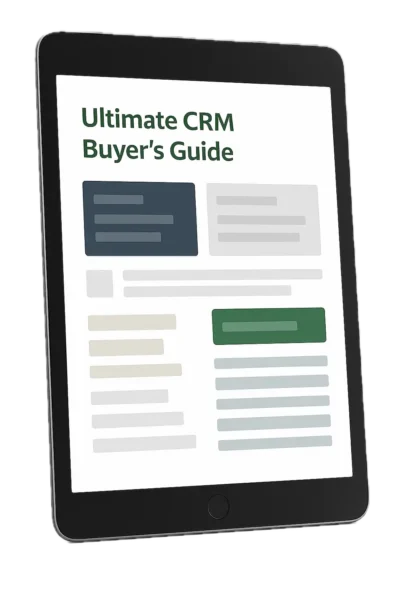 For many years, the CRM decision making process was driven by the needs of the sales and customer service departments and of management. At one point, the benefit of a CRM system to marketers was not very clear. Therefore, the marketing department had limited involvement in the CRM evaluation and selection process.
For many years, the CRM decision making process was driven by the needs of the sales and customer service departments and of management. At one point, the benefit of a CRM system to marketers was not very clear. Therefore, the marketing department had limited involvement in the CRM evaluation and selection process.
However, this has changed dramatically in the last couple of years. Marketers are now much more involved in CRM research, evaluation and selection.To understand why this shift has happened, we need to look at the history and progression of marketers’ relationship to CRM technology.
List Marketing
In the early days of CRM, marketers were often not even provided with a login to the company’s CRM system.
The way things generally worked was that marketers would either purchase lists or develop their own lists (via seminars and tradeshows) and then send those lead lists to someone who would import them into a CRM system. Salespeople, in turn, cold called members of purchased lists and made follow up calls to event attendees.
From marketing’s perspective, the leads in these lists went into a black hole. Marketers could not get any information about the quality of lists as measured by conversion of leads to qualified prospects and to customers. From salespeople’s perspective, the leads were “crap”.
Email Marketing from CRM Data
Once marketers discovered email as a marketing tool, a CRM administrator, periodically upon request of the marketing department, would export email addresses from the CRM system to a file. This file of email addresses was then imported into an email marketing system.
Since email addresses had no associated data, there was no list segmentation option. Everyone in the list received the same messaging, regardless of where they were in the sales cycle or what their demographics or firmographics were.
In addition, salespeople had no visibility as to whether their leads, prospects or customers took any action on those email messages.
Email Marketing Integration with CRM
Some of the early on-premises CRM system vendors developed integrations with in-house email marketing systems or with email service providers (ESPs).
However, as companies started making the switch from on-premises CRM systems to cloud-based CRM systems, the available integration between CRM and email service providers (ESPs) which were also cloud-based became much easier to set up and more seamless to operate.
CRM data could now be directly leveraged by marketers for list segmentation. Different leads and contacts could actually receive different messages. Salespeople now had visibility to bounces, unsubscribes and clickthroughs. To some degree, they could now gear their conversations to recipient behaviors.
Also, for the first time, marketers were “touching the stuff”. In other words, marketers needed to regularly log into CRM, because they were managing their email marketing campaigns from within CRM.
Web Forms for Lead Capture
In the meantime, as overall web traffic experienced rapid growth and more prospective buyers visited company websites, it was important to add “Contact Us” web forms to the Contact page.
Some of the more progressive marketers began to create free offers on their companies’ websites. Visitors would receive something of value in exchange for providing their contact, demographic and/or firmographic information.
The first generation of these forms resulted in visitor form submission data being emailed to internal distribution lists. In some cases, multiple salespeople received information about the same visitor. In other cases, a single person was responsible for manually forwarding these emails to the right salesperson based on lead distribution rules.
Marketing Automation and Inbound Marketing
As B2B and B2C buyers progressively shifted their research of products and services from traditional media to online search, marketers had to find ways to attract more people to their company’s website.
Marketers needed to develop inbound marketing processes. These processes required developing more content, creating calls to action and setting up landing pages. As more and more visitors submitted their information via web forms, it became increasingly important for those submissions to feed directly into the company’s CRM system.
Marketers also needed the right technology to support inbound processes. While the technological components could be cobbled together by an IT resource, marketers ultimately needed their own, all-in-one equivalent to a CRM system. This would give them the same control and flexibility that their organizational counterparts had in their CRM system.
However, a standalone marketing automation system represented the same challenges as the non-integrated environment of earlier years.
Marketing Automation System Integration with CRM
When fully integrated with CRM, a marketing automation system became much more effective for an organization. Salespeople and marketers now had an ongoing, bi-directional flow of information about website visitor behavior and the outcome of follow up sales activity.
Salesperson-generated leads could be included in marketing automation processes. Marketers now had visibility to the relative success of their various efforts.
The Marketing Tail Begins to Wag the CRM Dog
With the increasing depth to which marketing automation systems can integrate with CRM systems, marketers now have reason to become much more involved in the overall CRM research and selection process.
For a company that has a legacy CRM system that needs to be replaced and yet has a relatively new marketing automation system, the degree to which a new CRM system will integrate with the chosen marketing automation system may be a key criteria for CRM system selection.
In fact, for some companies, the existing marketing automation system has directly driven the choice of a new CRM system.
When a company is in the market for both a new CRM system and a marketing automation system, the marketing department is now much more involved in the overall technology selection process as their stake in the decision can be significant.




